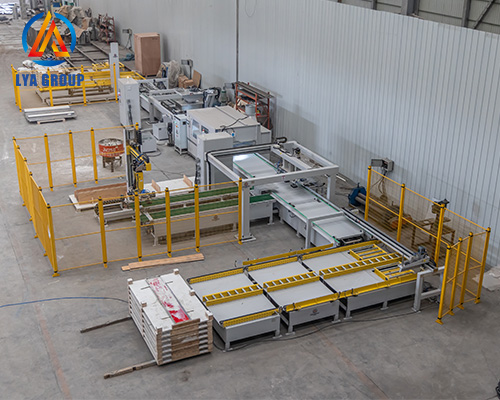How do you make wet cast concrete?
News 2024Õ╣┤3µ£ł25µŚź 87

A precast wet cast line is a production system used to manufacture precast concrete products using the wet cast method. The wet cast method involves pouring a high-slump concrete mixture into molds to create various precast elements, such as panels, beams, columns, and architectural elements. Here is an overview of the components and process involved in a precast wet cast line:
Molds: The precast wet cast line includes a variety of molds designed to produce different precast concrete elements. These molds can be made of steel, fiberglass, or other materials, depending on the desired shape and finish of the final product.
Concrete Mixing: The production process begins with the preparation of the concrete mixture. Aggregates (such as sand, gravel, and crushed stone), cement, water, and additives (such as admixtures and colorants) are accurately measured and mixed in a concrete mixer. The goal is to achieve a high-slump concrete mix with sufficient fluidity for easy pouring into the molds.
Mold Preparation: The molds are prepared by applying a release agent or mold oil to facilitate the removal of the cured concrete product. This helps prevent the concrete from sticking to the mold surfaces.
Pouring the Concrete: The high-slump concrete mixture is poured into the prepared molds using a concrete distribution system. This can involve overhead cranes, conveyor belts, or other equipment to transport the concrete to the molds. Care is taken to ensure proper filling of the molds, avoiding air pockets or voids.
Consolidation: Once the molds are filled, the concrete needs to be consolidated to remove any entrapped air and achieve proper compaction. This can be done using vibrators, which are applied to the molds or incorporated into the mold design itself. The vibration helps settle the concrete and ensure uniform distribution within the mold.
Curing: After consolidation, the molds with the newly poured concrete are moved to a curing area or chamber. Curing is a critical step in the wet cast process as it allows the concrete to gain strength and develop the desired properties. Curing methods can include steam curing, moist curing, or a combination of both, depending on the product requirements and production schedule.
Demolding and Finishing: Once the concrete has reached sufficient strength, the molds are opened, and the cured precast elements are demolded. The demolded elements may undergo additional finishing processes, such as surface treatments, polishing, or application of protective coatings, to achieve the desired appearance and quality.
Handling and Storage: The finished precast elements are then handled using overhead cranes, forklifts, or other equipment and transported to a storage area. Proper storage and handling practices ensure that the precast elements are protected from damage and maintained in good condition until they are ready for shipment or installation.
It’s worth noting that the specific design and configuration of a precast wet cast line can vary depending on the desired production capacity, product range, and automation level. Advanced precast wet cast lines may incorporate robotic systems for mold manipulation, automated concrete distribution, and precision control systems to optimize production efficiency and quality.
